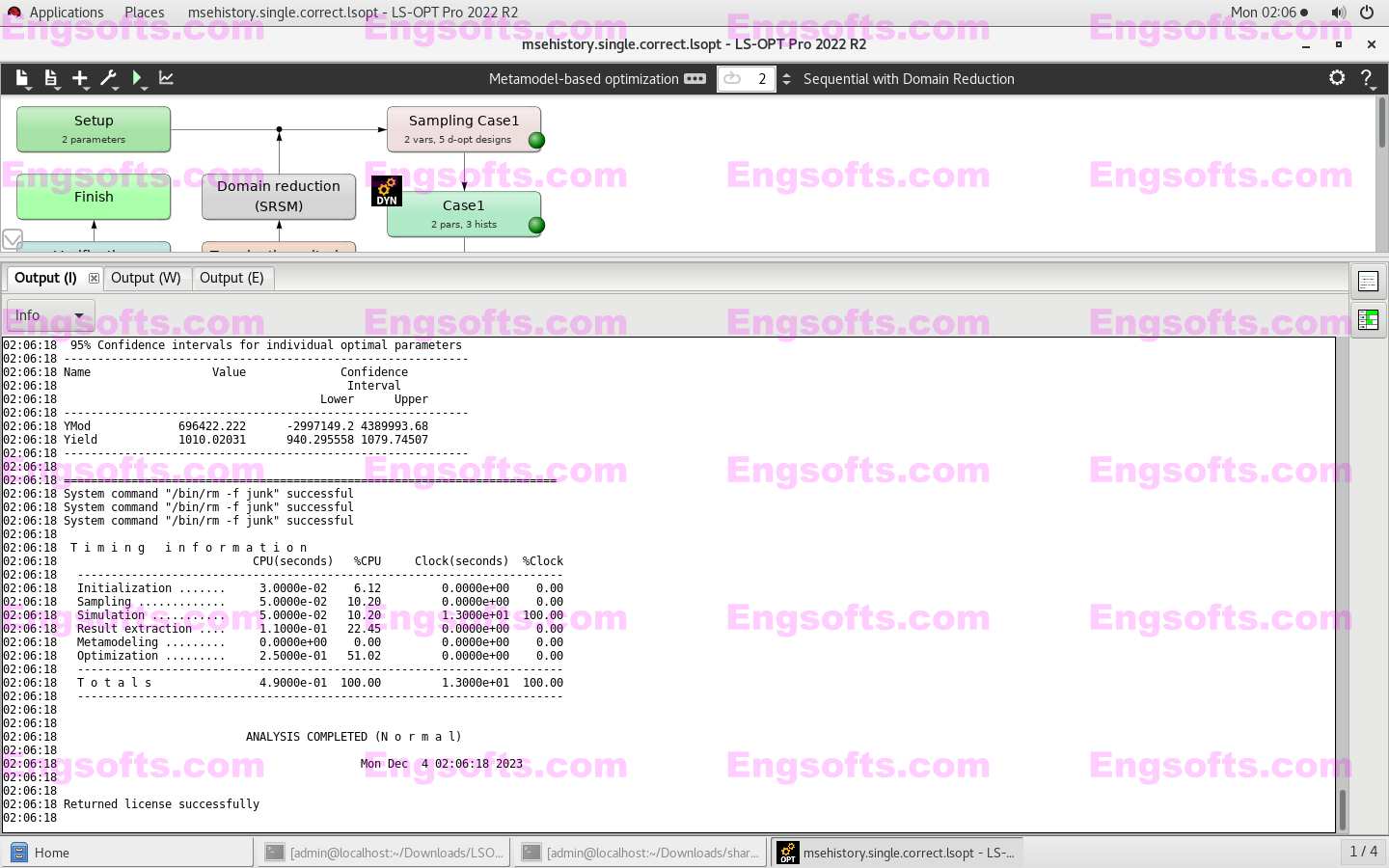LS-OPT is a standalone Design Optimization and Probabilistic Analysis package with an interface to LS-DYNA.
In the “conventional design” approach, a design is improved by evaluating its “response” and making design changes based on experience or intuition. This approach does not always lead to the desired result, that of a ‘best’ design, since the design objectives are often in conflict. It is therefore not always clear how to change the design to achieve the best compromise of these objectives. A systematic approach can be obtained by using an inverse process of first specifying the criteria and then computing the ‘best’ design according to a formulation. The improvement procedure that incorporates design criteria into a mathematical framework is referred to as Design Optimization This procedure is often iterative in nature and therefore requires multiple simulations.
No two products of the same design will be identical in performance, nor will a product perform exactly as designed or analyzed. A design is typically subjected to Structural variation and Environmental variation input variations that cause a variation in its response that may lead to undesirable behavior or failure. In this case a Probabilistic Analysis, using multiple simulations, is required to assess the effect of the input variation on the response variation and to determine the probability of failure.
To run and control multiple analyses simultaneously, LS-OPT provides a simulation environment that allows distribution of simulation jobs across multiple processors or networked computers. Each job running in parallel consists of the simulation, data extraction and disk cleanup. Measurements of time remaining or performance criteria such as velocity or energy are used to measure job progress for LS-DYNA’s explicit dynamic analysis calculations.
The graphical preprocessor LS-OPTui facilitates definition of the design input and the creation of a command file while the postprocessor provides output such as approximation accuracy, optimization convergence, tradeoff curves, anthill plots and the relative importance of design variables. The postprocessor also links to LS-PrePost to allow the viewing of the model representing a chosen simulation point.
Requirement:LSTC LS-Dyna Single or Double


 softmed
softmed 956575828
956575828
Must log in before commenting!
Sign Up